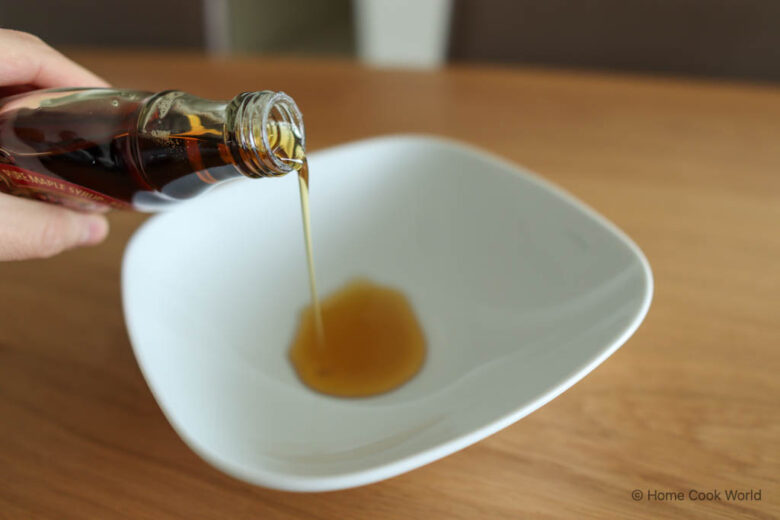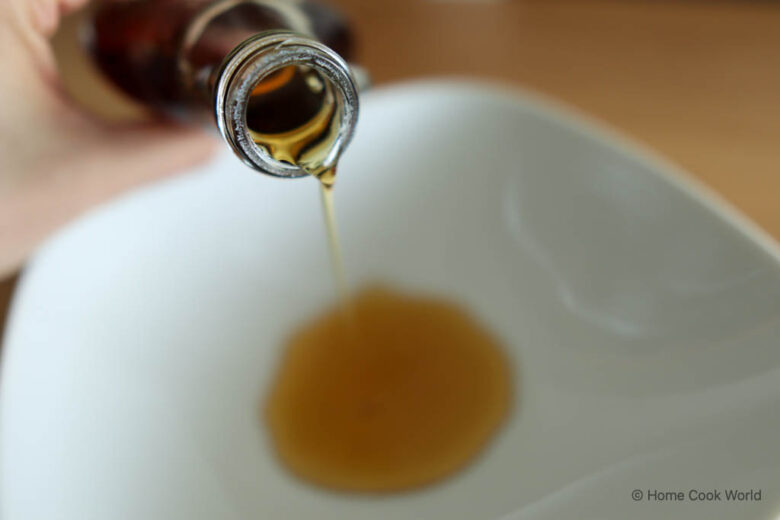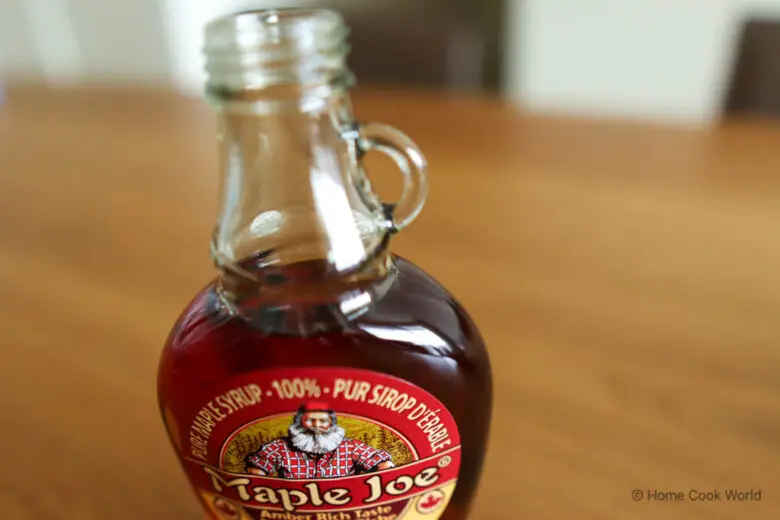Make no doubt about it: Canadians love their maple syrup. So much, they put a maple leaf on their national flag. Maple syrup is made from xylem sap, the juice that runs in sugar maple trees during late winter and early spring and carries soil nutrients from their roots to the leaves.
I came across Maple Joe’s maple syrup at the grocery store the other day—and I decided to try it out and write this review. If you’re curious to know more about this maple syrup and the company behind the brand, keep on reading.
Is Maple Joe real maple syrup?
Maple Joe is an authentic and pure Canada Grade A maple syrup. It’s made by Appalaches Nature, a family-run company in Quebec, Canada. The syrup is produced from 100% maple sap, has an amber color, and a rich taste.
This maple syrup is free of additives, preservatives, artificial flavors, sugar, or coloring.
It has a viscous texture and a saturated taste of sweet maple syrup with slight undertones of caramel and butterscotch. When it boils down to intensity, Maple Joe’s syrup comes right in the middle: it’s not too faint, nor overly strong. This makes it ideal for drizzling over ice cream, frozen yogurt, or pouring over pancakes, Belgian waffles, and cheesecake.
You could also use it as a sugar substitute for sweetening sauces, gravies (especially when you make poutine), curry, and chili. More unconventional uses for Maple Joe syrup include drizzling some of it on a salty burger to balance out the taste or adding it instead of sugar to Whiskey Sour and Old Fashioned cocktails.



Who Makes Maple Joe?
Maple Joe is made by Appalaches Nature, a privately-owned company headquartered in the city of Thetford Mines in south-central Quebec, Canada.
The history of Appalaches Nature dates back to 1920, when beekeeper Yves Michaud developed new techniques in beekeeping and established Famille Michaud Apiculteurs (the Michaud Family Beekeepers).
Its honey grew popular with the locals and the family business grew. Yves passed on to his son, who later passed it on to his grandson, Vincent Muchaud. Since the 1970s, the company has been expanding its product line with other natural sweeteners like agave and maple syrup.
Appalaches Nature created the Maple Joe brand in the year 2000. Today, it exports it to 55 countries.
As I was doing my research, one thing that stood apart about this company is how focused it seems to be on operating sustainably and continuously reducing its carbon footprint.
For example, Appalaches Nature built a new production plant in the 2000s. The plant was designed for the highest standards of sustainability and energy efficiency, and is currently in the process of getting a Leadership in Energy and Environmental Design (LEED) certificate.
The new plant uses biomass as a heat source for boiling the maple sap. This allows it to source biomass from local producers and emit 10 times lower carbon dioxide (CO2) compared to when using natural gas.
By all means, you know you get authentic maple syrup made by a sustainable company when you buy Maple Joe, which is what home cooks like you and me tend to look for nowadays.
How Is Maple Syrup Made?
Canadian Grade A maple syrup is made from the xylem sap of sugar maple trees. The trees are “tapped” by hand with plastic tubes which drain the sap in containers. As long as it’s allowed time to heal, a single tree can be tapped sustainably for decades.
Producers turn the sap into syrup by boiling it over a fire or heating it by steam. Boiling is the more traditional and slower production process. It takes about 6-9 hours to produce maple syrup by boiling, whereas steam heating can take as little as 90 seconds. Since much of the water is evaporated in that process, it typically takes about 45 gallons of raw sap to make 1 gallon of maple syrup.
The texture, aroma, and taste of real maple syrup are unmistakable—the fake maple-flavored corn syrup sold in grocery stores can’t even come close to it.
What Do Canadian Maple Syrup Grades Mean?
Canada is the top exporter of maple syrup in the world. Every year, Canadian companies produce 80% of the maple syrup in the world.
To ensure the highest quality of its maple syrup and protect the interests of consumers and producers, the Canadian Food Inspection Agency (CFIA) has created its own grading system, which consists of two grades: Canada Grade A and Canada Processing Grade maple syrup.
Canada Grade A maple syrup has a soluble solids content of 66-68.9%. It must be free from fermentation, have no sediment or cloudiness to it, and come with a color and taste consistent to the CFIA’s requirements.
Canada Grade A maple syrup comes in four color classes:
| Syrup Grade | Color Class | Best Uses |
|---|---|---|
| Canada Grade A | Golden color, delicate taste | Pour on ice cream, pancakes, or Belgian waffles. Drizzle over French toast or fruit salad. |
| Canada Grade A | Amber color, rich taste | Pour on fresh foods and baked goods. Add to porridge. Drizzle over frozen yogurt. |
| Canada Grade A | Dark color, robust taste | Add to smoothies. Sweeten curry and chili dishes with it. Drizzle in your tea or coffee. |
| Canada Grade A | Very dark color, strong taste | Bake goods and brew beers with it. |
As a rule of thumb, the lighter the color of the syrup and more delicate its taste, the higher the grade.
Producers must print the grade and the color class in English and French on the label. This is why authentic Canadian maple syrup bottles have bilingual labels (it’s also the easiest way to spot fakes if you live outside the country).
Canada Processing Grade maple syrup is any syrup that has a soluble solids content of 66-68.9% that doesn’t meet the quality requirements above.
In Conclusion
I really liked Maple Joe’s syrup and I think most of you will, too. It’s a real Canadian maple syrup for your daily use. Yes, there most probably are other, artisanal maple syrups out there that will set you back a little more, but give you a richer aroma and deeper flavor.
At the end of the day, this is Home Cook World—not Maple Syrup Connoisseur World. And if you’re looking for a real Canadian maple syrup to stock your pantry with that you can find at the store and don’t need to break the bank for, Maple Joe is an excellent choice.

